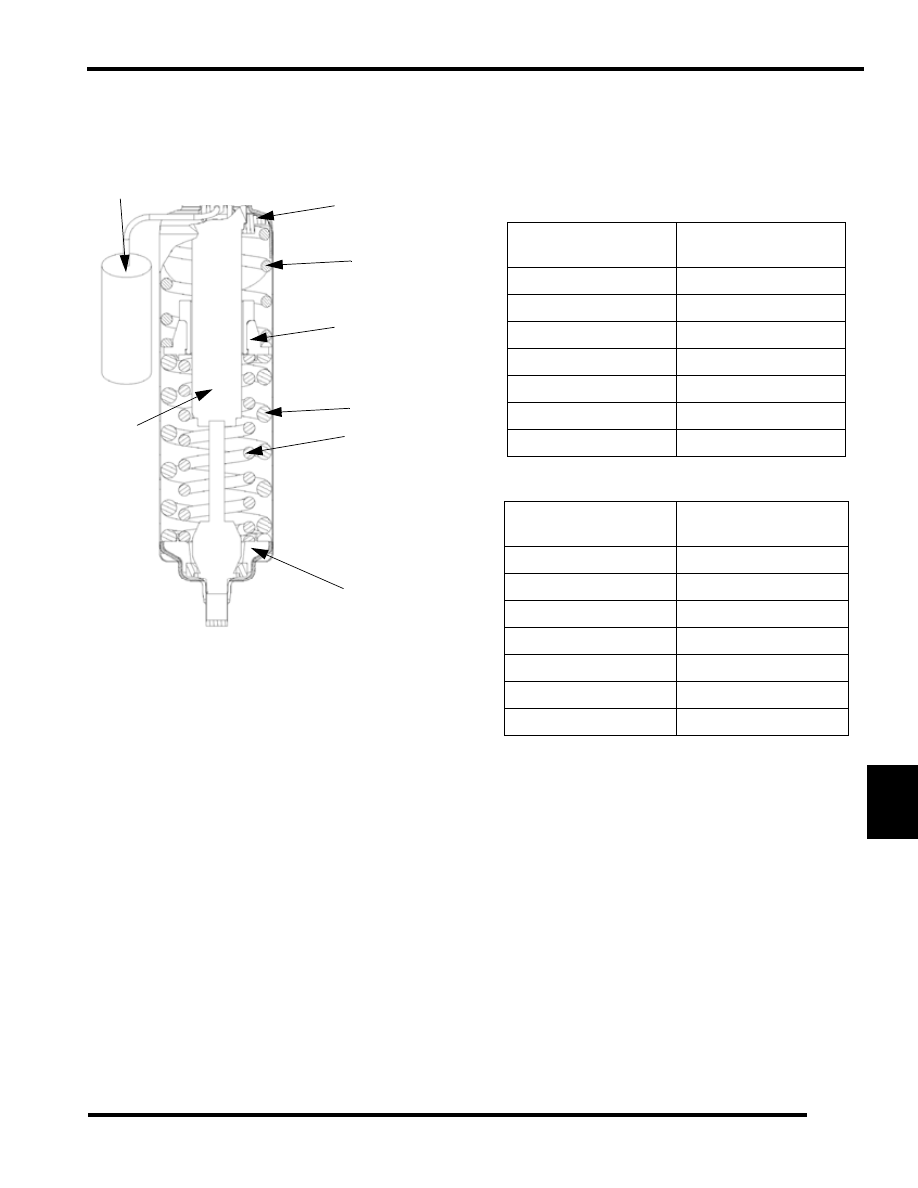Snowmobile Polaris Two Stroke (2007 year). Manual - part 58

9.15
REAR SUSPENSION
9
IMPORTANT: The M-10 rear suspension has been
designed to be very sensitive to rider weight. Changes
in rider weight of 25 lbs. or more may require
appropriate changes in FRA settings.
M-10 Terminology
• Couple Blocks: Plastic blocks located at the rear of
each rail. Blocks facilitate the couple function.
• Full Range Adjuster (FRA): FRA refers to the
adjustable lower rear shock attachments. Changing the
FRA location has two effects on tuning. First, moving
the shock forward increases shock speed, resulting in
firmer damping on compression and rebound. Second,
it also increases the effect of the rear spring by
displacing it further.
• Sag Settings: The difference in rear bumper height
from the sleds fully extended position to its lower
height with the rider seated on the sled.
M-10 Adjustments
The primary adjustment on the M-10 suspension is the Full
Range Adjustment (FRA). Adjusting the FRA will have to
MOST effect on rear suspension performance.
Polaris recommends that you allow between 25 to 200 miles for
the suspension to break in before performing any adjustments to
the suspension.
This chart is a guideline to be used for initial suspension setups.
Your setup may vary based on your desired riding style.
*=You may prefer an optional rear track middle spring retainer.
See “Optional Retainers” on page 9.16.
Lower Spring Retainer
Upper Spring Retainer
Center Retainer
Reservoir
Shock
Outer Spring
Inner Spring
Upper Spring
M-10 128
Rider weight with gear
(lbs.)
Suggested FRA Range
(Lower number is softer)
Under 100
1 to 1 1/2
100-150
1 1/2 to 2
150-200
2 to 2 1/2
200-250
2 1/2 to 3
250-300
3 to 3 1/2
300-350*
3 1/2 to 4
Over 350*
4 to 5
M-10 136
Rider weight with gear
(lbs.)
Suggested FRA Range
(Lower number is softer)
Under 100*
1 to 1 1/2
100-150*
1 1/2 to 2
150-200*
2 to 2 1/2
200-250
2 1/2 to 3
250-300
3 to 3 1/2
300-350
3 1/2 to 4
Over 350
4 to 5